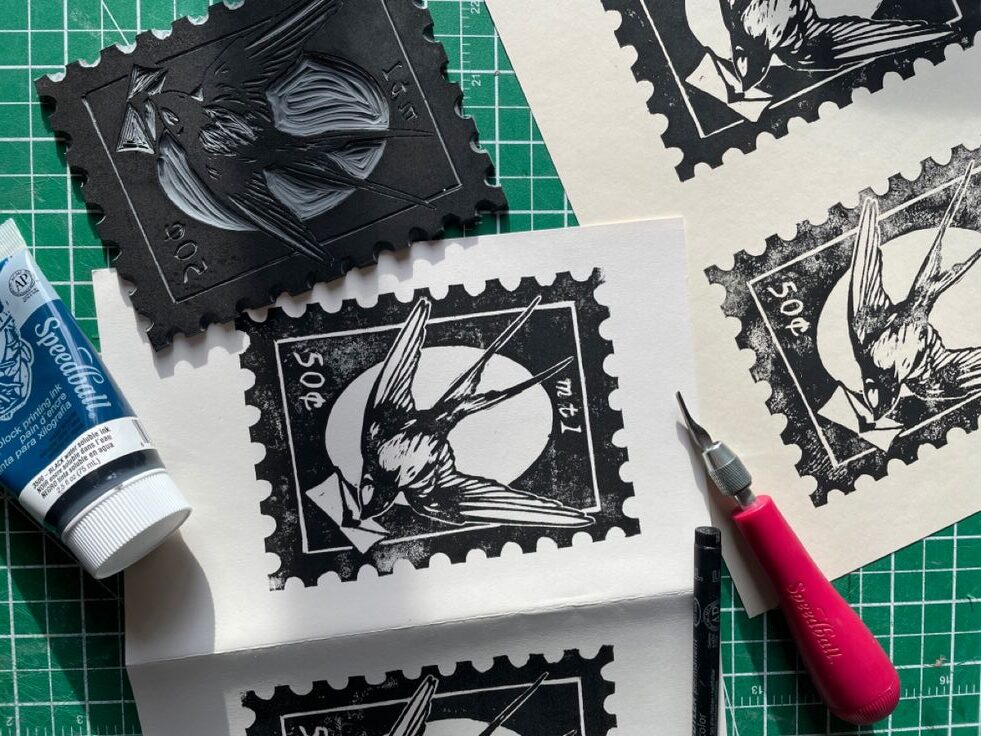Printmaking is a diverse art form with a rich history, encompassing various techniques that produce unique visual effects. Among these techniques, relief and intaglio printing stand out for their distinctive methods and results. Understanding the differences between these two printmaking processes is essential for appreciating their artistic potential and applications.
In this article, we will explore the key characteristics that set relief printing apart from intaglio printing, highlighting how these techniques manipulate the printing surface, apply the ink, and transfer the image to paper.
Relief Printing vs. Intaglio Printing
Here’s an explanation of the differences between relief and intaglio printing.
Relief Printing
Relief printing is a printmaking technique where the image to be printed is raised from the surface of the printing plate. Ink is applied to the raised areas, and then paper is pressed onto the plate, transferring the inked image onto the paper. Examples include woodcut and linocut.
Here’s how it works:
Plate Preparation: The printing plate, often made of wood or linoleum, is carved or etched to leave the image area raised.
Ink Application: Ink is applied to the raised surface of the plate using a roller or brayer, ensuring that the ink adheres only to the raised design.
Printing Process: Paper is then pressed onto the inked surface under pressure, transferring the inked design onto the paper. Examples of relief printing methods include woodcut and linocut.
Follow the link to learn more about the different processes and techniques of Relief Printing.

Intaglio Printing
Intaglio printing is a printmaking technique where the image is incised into the surface of the printing plate. Ink is applied to the entire plate and then wiped off the surface, leaving ink only in the recessed lines. Dampened paper is pressed onto the plate under high pressure, transferring the ink from the incised areas to the paper. Examples include etching, engraving, and aquatint.
Here are the key aspects:
Plate Preparation: The plate, typically made of metal such as copper or zinc, is etched or engraved with lines or textures that will hold the ink.
Ink Application: Ink is spread over the entire surface of the plate, filling the incised lines or grooves.
Inking Process: Excess ink is wiped off the surface of the plate, leaving ink only in the recessed areas.
Printing Process: Dampened paper is pressed onto the plate under high pressure, causing the paper to absorb ink from the recessed areas of the plate. This results in a characteristic crisp and detailed print. Common intaglio techniques include etching, engraving, drypoint, and aquatint.
Follow the link to learn more about the process and techniques of Intaglio Printing.

Key Differences Between Relief and Intaglio
Surface: Relief printing uses a raised surface for printing, while intaglio printing uses a recessed or incised surface.
Ink Application: Relief printing applies ink to the raised design, whereas intaglio printing applies ink to the entire plate surface and then wipes away the excess, leaving ink in the incised lines.
Printing Process: Relief printing transfers ink from the raised surface directly onto the paper, while intaglio printing transfers ink from the recessed areas of the plate.
Relief and Intaglio printing offer distinct methods for creating prints, each providing unique opportunities for artistic expression. Relief printing, with its bold lines and striking contrasts, allows artists to create dynamic and visually impactful images. Intaglio printing, known for its fine details and delicate textures, enables the creation of intricate and refined works of art. The differences in surface manipulation, ink application, and image transfer result in distinct visual outcomes, making each technique valuable in its own right. Together, these methods enrich the printmaking landscape, offering diverse possibilities for creativity and artistic exploration.